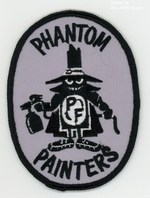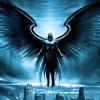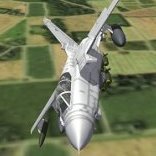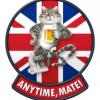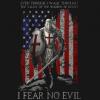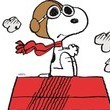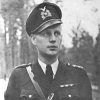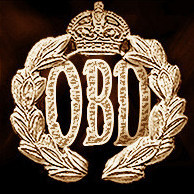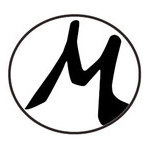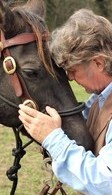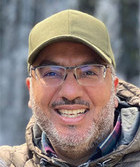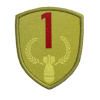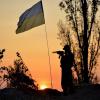Leaderboard
Popular Content
Showing most liked content on 01/06/2022 in Posts
-
10 points
-
10 points
-
10 pointsThanks for the kind words. Seems like, theres still some interest in those skins. You'll need patience though...as you can see, there's still enough to do. Hangarscreens and stuff like that are also still missing for many skins. Green = Skin ready Dark Green = same Skin for 2 variants needed (for the faulty SF2 upgrade-function in campaigns -> only plane OR skin can be upgraded) Blue = 2 Skins for 1 deployment (gray + camo) Orange = older skin in lower resolution has to be reworked. White = not done yet. Nevertheless, I just found some more skins in a backup: VMA-214 Black Sheep, 6/1965 - 2/1966, Chu Lai AB, A-4C VMA-214 Black Sheep, 3/1966 - 4/1967, Chu Lai AB, A-4C VMA-223 Det. T Bulldogs, 10/1964 - 5/1965, USS Yorktown, A-4C VA-56 Champions, 11/1966 - 7/1967, USS Enterprise, A-4C VA-212 Rampant Raiders, 10/1964 - 5/1965, USS Hancock, A-4E
-
9 pointsA few from Da Nang & the surrounding area. Is that Monkey Mountain in the background...?? Marble Mountain Marine Air Facility ....still wip. Da Nang Airbase 1967...ish.... Still wip.....but life would be a lot easier with a TOD editor.....or if I could get to grips the Terrain editor..
-
7 pointsI did it again and this time the roads of two neighbor tiles fits much more better. Vietnam has now a dense street network. Next step it will be to paint some villages on the tiles.
-
5 pointsAfter long studies of sat images from Google Earth i realized what i disliked on Green Hell. Vietnam is highly populated. Nearly all 1000 meters is a village, while the Green hill is nearly empty of villages. Thatswhy i thought i should make roads on each Farm tile. This is what the first attempt looks like: Unfortunatly i was not carefull enough while painting the roads. When i marked the end of the roads on tileend i had a calculation error of 18 pixels. Thatswhy some tiles does not fit and the roads have a gap on tileend. What means, back to start. But the principle is confirmed. I must only adjust the positions more carefully. When the roads are good i will place villages on the map, so that the terrain will be heavily populated.
-
4 points
-
3 pointsI finally continued my long term project - Skins for all A-4 Skyhawk squadrons/deployments in Vietnam. New skins aswell as a rework of my older (lower resolution) skins will be included. Have fun! Some progress: VA-15 Valions, 4/1966 - 11/1966, USS Intrepid, A-4B CAG: Line: VA-95 Green Lizards, 4/1966 - 11/1966, USS Intrepid, A-4B VA-153 Det. R Blue Tail Flies, 6/1964 - 12/1964, USS Kearsarge, A-4B VA-12 Flying Ubangis, 3/1970 - 12/1970, USS Shangri-La, A-4C CAG: Line: VA-22 Fighting Redcocks, 3/1965 - 11/1965, USS Midway, A-4C VA-22 Fighting Redcocks, 6/1966 - 2/1967, USS Coral Sea, A-4C CAG: Line: VA-22 Fighting Redcocks, 11/1967 - 5/1968, USS Ranger, A-4C VA-76 Spirits, 1/1967 - 8/1967, USS Bon Homme Richard, A-4C VA-172 Blue Bolts, 6/1966 - 2/1967, USS Franklin D. Roosevelt, A-4C CAG: Line: VA-172 Blue Bolts, 3/1970 - 12/1970, USS Shangri-La, A-4C CAG: Line: VA-195 Dambusters, 1/1964 - 11/1964, USS Bon Homme Richard, A-4C VA-195 Dambusters, 4/1965 - 1/1966, USS Bon Homme Richard, A-4C VA-195 Dambusters, 11/1966 - 5/1967, USS Ticonderoga, A-4C VA-195 Dambusters, 12/1967 - 8/1968, USS Ticonderoga, A-4C H&MS-15 Det. N Angels, 8/1965 - 3/1966, USS Hornet, A-4C "Fanny Hill" "Ko Sisters" VA-113 Stingers, 1/1968 - 7/1968, USS Enterprise, A-4F VA-93 Blue Blazers, 1/1968 - 10/1968, USS Bon Homme Richard, A-4F CAG: Line: VMA-211 Wake Island Avengers, 10/1965 - 7/1966, Chu Lai AB, A-4E VA-212 Rampant Raiders, 1/1968 - 10/1968, USS Bon Homme Richard, A-4F VA-212 Rampant Raiders, 8/1969 - 4/1970, USS Hancock, A-4F VA-212 Rampant Raiders, 10/1970 - 6/1971, USS Hancock, A-4F VA-212 Rampant Raiders, 1/1972 - 10/1972, USS Hancock, A-4F VA-192 (Worlds Famous) Golden Dragons, 1/1964 - 11/1964, USS Bon Homme Richard, A-4C VA-106 Gladiators, 6/1968 - 2/1969, USS Intrepid, A-4E to be continiued...
-
3 pointsSeeing how you, Gepard, Menrva or Wrench struggle with TODs I wish Mue to find some time to finish his editor, that would be amazing. In the meantime, I attack some Banana republics with some unlikely attack planes.
-
3 pointsI got this MiG-15 foam glider toy in 1978. I think I have the entire set of gliders. Look at the paint job given to it by famous aviation artist Lou Drendel:
-
3 pointsGood to be back and to get dug in to the campaign! Many thanks to epower for an outstanding job getting us up and running. I won't get a chance to read everyone's stories tonight, but I thought I get my first one up and then go back to them. War Journal – Sergeant David Armstrong Hawkwood, Royal Flying Corps Part 1 I found my calling as a pilot quite by accident. My parents, having failed as farmers, acquired a toyshop in the lovely market village of Tring in Hertfordshire, and there I grew up as a lacklustre student and reluctant part-time shopkeeper. My best friend, Eddie Bristow, lived nearby. His father owned a small garage where Eddie and I spent every spare moment tinkering with motorcycles and, when Mr Bristow was inattentive, with the occasional automobile. The night I learned to drive will remain with me forever. Mr Bristow had been labouring for two days over the most beautiful machine I ever saw – a gleaming black Rolls-Royce touring car. It was a chance of a lifetime and I shamelessly put Eddie up to sneaking into the garage after midnight and helping to roll the machine to a place in the high street where we could start the motor without waking the Bristows. I had a rough idea of the theory behind operating a motor car and had watched Mr Bristow’s trick of starting the motor by inducing a spark by a rapid flicking of the ignition advance lever. We were therefore soon underway and headed for the countryside. I shifted up into third gear without quite waking the entire population. Poor Eddie appeared to die a thousand deaths with each painful crashing of gears. But once into top gear, the powerful Rolls-Royce engine carried us up and down hills and ran smoothly at all speeds from a sedate walk to a terrifying rush. When we reached Berkhamsted, we discussed whether we should turn back or continue our explorations. Eddie opened the glove box in search of a map and immediately began to jabber like a madman. He had found the registration papers for the vehicle and discovered that it was owned by Walter Rothschild – the Rothschild family basically owned Tring. All sense of adventure evaporated in an instant and we turned for home. When we got back, Mr Bristow was standing outside the garage in a pair of overalls pulled over his pyjamas. Eddie got a sound cuffing and I was dragged to my parents’ home by one ear. It all paid off in the end, though. My father promised that I would spend every Sunday that summer doing jobs for Mr Bristow at the garage. Mr Bristow was surprised that I had been able to start and drive the Rolls-Royce and soon had me picking up and delivering motors for customers who needed work done. By the beginning of 1913, I managed to secure employment as a chauffeur for a gentleman by the name of Cust. This fellow was young and adventurous and rich, and more than anything he wanted me to teach him to drive. He was, however, hopeless at it and soon gave it up. Undaunted by his inability to handle a motorcar, Mr Cust acquired a 50 horsepower Bleriot aeroplane and hired an instructor to teach him to fly. Within a week he had succeeded in smashing the Bleriot, both his legs, his jaw, and one arm. Scarcely was he able to get about with two canes before he bought a Farman. He then proposed that I learn to fly it myself and act as his aerial chauffeur. At my employer’s expense, I was enrolled at the Grahame-White School, Hendon. I obtained my Royal Aero Club certificate in August 1913 and flew Mr Cust many times that autumn and the following summer, that last glorious summer before the war. When the first call for volunteers went out, I immediately signed up and informed the recruiting sergeant of my experience in aviation. He was supremely disinterested and told me that flying machines were useless objects and best kept far away from real soldiering. His eyes lit up, however, when he learned that I was a chauffeur and had some knowledge of internal combustion engines. Before I knew what hit me, I was a newly minted Private in the Army Service Corps. We did several weeks of training – mainly drill and inspections – and then were sent off to Avonmouth, near Bristol. From there we shipped out to Boulogne. I spent the next three months driving supply lorries back and forward between the coast and our lines in Flanders. In December I came down with a nasty case of pneumonia and was invalided back to Dover. While recovering in Dover, I met an officer of the Royal Flying Corps and enquired about transferring to the flying service. He was quite taken with the fact that I already had my RAeC ticket. I was set up for an interview in London, and within two weeks found myself in training at Larkhill on the Salisbury plain. Most of my flying hours were spent in machines identical to Mr Cust’s, and I had few problems impressing the instructors. There is even a chance to fly one of the new tractor Avros and a BE2a. Finally, in late May 1915, I received orders – after two weeks of home leave, I was to report to the pilots’ pool at Saint-Omer, France! This was the headquarters of the Royal Flying Corps in France and Flanders and all replacement pilots were drawn from the pool. Saint-Omer was a bit desolate despite being one of the busiest spots one could imagine. I knew no one and mattered to no one, least of all the band of hairy sloths in the kitchens of the warrant officers’ and sergeants’ mess. The food was truly dreadful and, as my name was somehow forgotten on pay parade, I was not able to remedy the situation by visiting any of the local cafés. The only redeeming feature was the availability of several rather battered BE2s. As there was a better than average chance that this would be my next official bus, I added another ten hours of BE time to my flying log. On 1 June 1915, I received orders at breakfast to prepare to move. A tender would pick me up outside pool headquarters at 9 o’clock to take me to my new home – 4 Squadron at Bailleul. Two officers were waiting there with me. One gentleman wore wings on his tunic and was bound for 1 Squadron and the other, Lieutenant Norris, was an observer just transferred from the Royal Artillery and was bound for 4 Squadron with me. When the tender arrived, the two officers crowded into the cab while the corporal driver stowed their kit in the back. When he was done, the driver nodded at me and said, “I’m afraid there’s no more room in the front, Sergeant.” I stowed my own kit and climbed aboard. There I found the officers’ greatcoats atop their valises. I placed one coat on the floor and used the other as a blanket, and then settled down for a very good sleep. Fortunately, I awoke in time to replace the greatcoats before the first officer dismounted at 1 Squadron! Bailleul seemed to be a delightful place, crowded with soldiery of every description, with a wide market square ringed with interesting restaurants, hotels, and shops. Our aerodrome was just on the edge of the town and in fact was referred to as the “Town Ground” aerodrome to distinguish it from the Asylum aerodrome nearby. I dismounted and assisted the observer officer with his kit. His name was Lieutenant Norris. He suggested that we report to the OC, Major Longcroft. I told him that I would first make my presence known to the disciplinary Sergeant Major and then report to the OC. Sergeant Major Parson seemed to appreciate my gesture and made it a point to accompany me to see Major Longcroft. The OC was an immaculately groomed and polished Welshman, obviously from a family who had never had the need to buy furniture. He welcomed me to the squadron and advised me to take my time in getting to know the place. Apparently, I was the squadron’s only NCO pilot. The Major suggested to Sergeant Major Parson that I share accommodation with Sergeant Buckley, a technical sergeant who had been with the squadron since the start and who had flown many patrols as an observer. The squadron was under canvas. Only the squadron office and the messes were in proper wooden buildings. I found Sergeant Buckley’s tent and threw my things inside, and then went in search of my new roommate. I found him in one of the single-aircraft canvas hangars, directing an engine change on a Bristol Scout. Ned Buckley, for that was his name, hailed from Lancashire and had a broad West Country accent that would take some getting used to. He suggested how best to arrange our things in the tent and let me get on with it, even to the point of moving his cot. That afternoon I took up a BE2 with Lieutenant Norris in the forward seat. A few of our machines were fitted with Lewis guns. Ours was not. Mr Norris’s sat glumly with his collar pulled up around his ears, cradling a Lee Enfield rifle. Our orders were to get our bearings, get used to one another, and stay away from any enemy aeroplanes. Mr Norris reminded me emphatically of that last point. It was a glorious day, the deep blue sky marred only by a single puffy cloud far to the east over enemy territory – “Hunland,” in RFC parlance. We flew north until the Channel coast lay just ahead and turned back to circle widely around Bailleul, taking careful note of any useful landmarks. I flew several more familiarisation patrols over the next few days. Then, on 10 June 1915, I flew with Lieutenant Osborne as an observer to spot for the artillery. Our target was a German gun line in front of Lille. Although the squadron had one machine fitted out with the new lightweight wireless apparatus, we made do with the old system of signalling with coloured Very lights. With the wireless sets, there was room only for the pilot as the set took up all the space in the front cockpit of the BE. Mr Osborne was new, as was I, and I suppose that the aim was more to give us experience than to discomfit the Hun. It was something of a relief when Mr Osborne confessed when we were back on the ground that he was not at all sure that what he was firing at was a German gun line. 15 June brought my first experience of losses in combat. Lieutenant Norris went out with another pilot and the machine did not return. No one knows what became of them. On 17 June, I again piloted Mr Osborne for a spotting patrol. We had a couple of moments of excitement. At one point, as we were flying over the enemy lines near the town of Lens, Mr Osborne raised himself in his seat and aimed his Lee Enfield off to my right side. I looked behind but saw nothing. We spoke of it later and he told me that he was sure he had spotted a strange aeroplane emerging from a cloud bank. He said it vanished back into the cloud before I turned about. A little later in the same patrol, we had just turned back to the north when I heard a dull popping sound over the roar of the engine. Two black puffs of smoke appeared off to my right and a little below. This was my first experience of “Archie” – anti-aircraft fire. The Hun Archie merchants were a dud lot and came nowhere close to us, so it was not too difficult to maintain the look of sang froid.
-
2 pointsHere you are gents! https://www.sas1946.com/main/index.php/topic,68153.0.html
-
2 points
-
2 points
-
2 pointsI see the campaign is already well underway! I'll read all of your reports later. But now, here's the first entry in the saga of my pilot, sous-lieutenant Auguste Besson. I'm afraid his origin story is a bit long! I'll be less verbose in the future... Born in Cherbourg, Normandy on the 1st of July in 1886 as the son of a middle class official in the French navy, Auguste Besson spent his carefree youth in and around Cherbourg, roaming the Normandy countryside, fascinated by the rich history of the region. Having an interest in a great many things, Auguste eventually decided to become a teacher and moved to study at Paris. After graduation, Auguste completed his compulsory military service in an infantry regiment, being trained as a platoon leader. He then found work in a regional school in his beloved Normandy. By 1914, Auguste had settled down into a relatively comfortable middle class life. He was also involved in a budding relationship with a fellow teacher, Marie Leclerc. But then the war broke out and Auguste was called to arms. As a sous-lieutenant de réserve, he took command of a reservist rifle platoon and was quickly thrown into battle to meet the rapidly advancing German armies... "ATTAQUE À OUTRANCE" French Third Army front, West of Longwy, early morning of August 21st, 1914. *** ”Mon lieutenant, can you hear it? Another airplane!” Auguste could clearly hear the drone of an engine coming from somewhere above them. It was the second airplane of the morning. Obviously something important was happening in their sector. ”Yes, private Reynaud, I can hear it. Sounds exactly the same as the previous one. One of our rotary machines, unless I’m mistaken.” ”Makes you wonder – what use is it for them to fly in this bloody pea soup fog? I can barely see the tip of my nose!” Sergeant Grosjean joined in the conversation. ”Well, they are flying above the fog, so it’s probably bright and sunny up there. But you’re right, sergeant – they can’t see the ground through the fog.” The whole platoon listened in silence as the airplane droned over them. Eventually, the sound died down as the machine vanished somewhere to the east. Probably trying to spot the boche around Longwy, Auguste thought. He had a general idea of their regiment’s position, but he didn’t know the details. Mere platoon leaders have no use for such information anyway. Auguste felt tired. Ever since mobilization in early August, his unit had been constantly on the move. At first, they had had the luxury of train transport, but that hadn’t lasted for long. Having reached their concentration area, the regiment had detrained and began to march on foot. The summer had been unusually hot, and the heat soon left its mark on the reservists of the regiment. Cases of dehydration and heat exhaustion were common. But now they had reached the forests of the Ardennes, and the weather had changed too, at least for now. ”Platoon leaders, to me!” The shout came from Capitaine Lefebvre, their company commander. He was a knight of the Legion of Honour and a veteran of colonial campaigns in Africa. The platoon leaders, including Auguste, gathered at the command post, which was in a copse of trees next to an unpaved road running towards Longwy. The captain was sitting on a camp stool, holding a map. ”Alright, gentlemen! We have our orders from the Colonel. Third Army is making a move against the boche at Longwy. The plan is to hit them in the flank and hopefully roll them up like a wet blanket. Our regiment is currently in the reserve. We will join in the fun when requested by the powers that be. The first wave is already on the move – ” The heavy silence in the woods was suddenly interrupted by gunfire in the distance. Rifles, machine guns – and artillery too. The captain grinned behind his thick blonde mustache that was already turning grey from age and worry. ”I see the gods of war know the meaning of timing! This is it, gentlemen. I have complete trust in you and the men. We will do our duty for France!” *** The company had formed up into a column along the road. The sun was climbing higher and its rays were slowly dispersing the fog. Auguste could now clearly see his men sitting down in formation, holding their rifles in readiness. It occurred to him that the red kepis and trousers they were all wearing would probably make them excellent targets for the enemy. The whole thing didn’t feel too different from a peace-time military exercise. Waiting for the action to start was the same – only the stakes were higher. Constant gunfire could be heard in the distance. Auguste’s reveries were interrupted by another shout from the captain. ”Company! Stand up! Prepare to march!” A flurry of activity followed Lefebvre’s order. Soon, the men were moving along the Longwy road, Auguste leading his platoon from the front. *** Some time later, the company had left the road and was now deployed in open skirmish formation, moving rapidly forward. The difficult terrain made it hard to maintain order. The sounds of fighting were now very loud, but the woods made it impossible to see far. Here and there, wounded men from the first wave of attack were limping back from the action, some alone, some helped by their comrades. Auguste tightened his grip on his service revolver. The fog had cleared and the weather felt oppressively hot again. Suddenly they emerged into an opening in the woods. In front of them, they could see the backs of another company. The men were shouting and charging towards the other side of the clearing. There, Auguste spotted muzzle flashes and puffs of smoke. It must be the boche! Auguste had no time to think further as Captain Lefebvre, who was with two runners to the right and front of Auguste’s position in the skirmish line lifted up his sword, turned around, and bellowed at his company: ”Forward, men, forward! Give ’em the bayonet! Vive la France!” Shouts of ”Forward” and ”Vive la France” erupted from the men as they leveled their rifles with bayonets fixed and broke into a run. Terrain was easier now, and Auguste thought they could reach the enemy position in mere seconds. But then there was a huge explosion. And then, blackness. *** When Auguste regained consciousness, he discovered that he was in a great deal of pain and that he couldn’t see properly. A bandage was covering his eyes and he saw only dim light. ”Hey, the lieutenant is back with us!” A voice that Auguste didn’t recognize. He thought he was lying down on something uncomfortable – a stretcher, maybe? The pain was everywhere, like someone had stabbed him a hundred times with a knife and left him bleeding to death. Auguste attempted to move, but it was too much. ”Hey, sir, please don’t do that! You are hurt pretty badly!” That voice Auguste did recognize. It belonged to Sergeant Grosjean. If only I could see! ”Sergeant… is that you? What happened? Where am I?” Auguste could barely speak. His mouth was like sand and his voice like the creaking of an old floorboard. ”We charged the boche and then you got hit. By a shell. It exploded close to you. You’re lucky to be alive!” Auguste groaned. ”Not feeling very lucky right now. Where’s the rest of the platoon? And the Captain?” Sergeant Grosjean was silent for a while. When Auguste was about to repeat his questions, the man finally spoke. ”They… most of them didn’t make it, sir. Either dead or wounded, nearly all of them. The Captain… he was hit by the same shell. And I mean hit, sir. He’s… gone.” The sergeant fell silent again. ”My God!” Auguste tried to hold back tears. Everything hurt. ”Only He can help them now. But you’re still alive, sir. And we’re now going to lift you up and put you in the ambulance and they will then take you to a hospital. I’m afraid this is going to hurt, so brace yourself, sir!” Auguste groaned as the men moved the stretcher. But he wasn’t the only one in pain. He could hear the cries of wounded men all around him. ”Grosjean! Wait! How did I get here?” ”I carried you, mon lieutenant.” Auguste could feel a hand – Grosjean’s, probably – gripping his shoulder. ”You’re safe now, or as safe as anyone can be around here. I will get back to the platoon now. Good luck, mon lieutenant!” ”Grosjean!” It was all Auguste could manage as the horse-drawn ambulance lurched forward and pain overwhelmed his senses. Three months later ”And now try to move your left leg”, the surgeon said to Auguste. He did as ordered. The leg felt stiff, but it could have been worse. So much worse! ”Very good! Alright, you may sit down now.” The bespectacled Doctor Stein was so overweight that he seemed to be bursting out of his clothes. But he certainly knew his business. The doctor had operated on Auguste several times since the sous-lieutenant was brought to the surgical hospital in Paris from the Ardennes battlefield. ”You have made excellent progress, and even more so, considering that we had pull out 56 pieces of fragment and assorted foreign objects from your body!” Doctor Stein was clearly happy about his success. ”Soon, you’ll be ready to return to service.” ”Thank you, sir. For sure, I have no complaints about my treatment here.” Smiling happily, Doctor Stein gathered up his files and then lumbered out of the room. ”Now there’s a jolly old fellow, if I ever saw one!” The voice belonged to Lieutenant Mangin, an aviator in the French air service. Auguste had been sharing a room with him for a few weeks. Mangin had been injured in a flight accident and had been operated by Doctor Stein in the same hospital as Auguste. Mangin was a short, dark man with a neatly cropped moustache. He was very jovial and liked to talk a lot – a contrast to Auguste, who was more reserved. Mangin had become a pilot already before the war and had told many interesting stories about his adventures to Auguste, though the sous-lieutenant strongly suspected that not all of the tales were completely factual. However, Mangin was clearly passionate about his work. ”So, have you considered my suggestion? That instead of rejoining the poor bloody infantry, you’ll apply for a transfer to the air service and let me write a letter of recommendation for you?” The men had been talking much about Auguste’s interest in aviation, and whether he really wanted to get back to his regiment again. ”Yes, I have. And I will do as you suggest. I want to become a pilot. Maybe I’ll do better in the air service than as an infantryman. Because my captain and my platoon are dead and I didn’t even get to fire my pistol in anger!” Auguste couldn’t help but feel guilty about his survival. Mangin gave him an understanding look. ”There’s nothing you could have done about that, unless you have the ability to stop boche shells.” Auguste was silent for a moment before he spoke. ”I know. It is what it is. Can’t help any of it now, anyway.” ”Indeed. Well, shall we get started on that letter now?” Mangin asked with genuine excitement in his voice. ”Yes,” Auguste said and nodded in agreement. TO BE CONTINUED...
-
2 points
-
2 pointsMay the universe bless you every day. In fact, I was hoping for such a party from you. And while I am done with Corsairs, I am slowly preparing for Intruders over Vietnam. Thank you. Live long and prosper.
-
1 pointThe model is not very accurate. The model is labeled as an F-4E. The "flying saucer" antenna is consistent with a QF-4E The jet exhaust nozzles look more like an F-4E/F/G/J/S than an F-4B/C/D/N. But the nose is more or less an early F-4B/C. The underwing missile rails look more like a USAF variant than an USN variant. The wings don't have the bumps for wide tire USAF F-4C/D/E/G main landing gear. Given all the discrepancies, it doesn't fit any one type, but it looks closest to a QF-4B or QF-4C, leaning toward the QF-4C because of the USAF "flying saucer" antenna that is not present on USN QF-4 variants.
-
1 pointThe "flying saucer" antenna is used for drone control, i.e. QF-4 versions. All of the photos I can find with that antenna are the USAF QF-4E. I did not find a single photo of a Navy QF-4 using that antenna, nor could I find a photo of a QF-4C or QF-4D with that antenna.
-
1 pointOK I see it here, thanks. Not to do with screen res, some other issue. We will look at and if we fix release in a patch at some point. [edit: this is fixed and improved in V1.20 which is out now! See our website www.overflandfersfields.com]
-
1 pointRick, if the observer finds you annoying enough, he might just accidentally pull the trigger as well...
-
1 pointI hope people are enjoying the mod so far. For those users who may be uncomfortable with the amount of cloud flashing still in the mod, you may be pleased to know that I am currently working on another small update that will further reduce blinking in mixed light and dark cumulus clouds, reduce cloud density (and blinking) in a couple of heavy clouds, reduce the chances of strobing in heavy fog (seen above in Hellshade's video), and fixes one or two other minor errors. A likely future update will allow users to choose a "light" version of the mod which will automatically remove some of the heavier cloud and fog types that tend to be more prone to cloud flashing, blinking, and popping, with only a slight loss in cloud variety and appearance. Jara and I are also looking into possibly using the Mission Editor to automatically "cull" extra clouds from heavy or rainy weather conditions which can also contribute to increased amounts of cloud flashing. BB
-
1 pointAlways kills me with the Lewis gun RIGHT OVER YOUR HEAD! If the War doesn't kill you, there's little hope your hearing will survive!
-
1 pointA great start gentlemen! Opening my account of the career of Edward Albert Le Mesurier... Excuse the shoddy photo-editing. I couldn't get the quality to match. :( ‐----------------------- Merville aerodrome looked tiny. The tender had barely turned off the main road before stopping again at a farmhouse some hundred yards down the track. There was scarcely room for a tiny collection of trucks in the motor pool. Beyond the farmhouse, the dark haired young man could see tented hangars and a suggestion of open field beyond, with a row of poplar trees obscuring most of the activity. The officer gave his thanks to the driver and pulled down his valise before entering the shade of the farmhouse door. Farmhouses are not built to be military installations. After making inquiries, the commanding officer of 2 squadron was found in his office, which also served as a bedroom. The new arrival noticed that the Major was packing his own valise. “2nd Lieutenant Le Mesurier, reporting for duty sir,” Edward introduced himself. “I’ve been sent from St Omer.” The CO returned his salute. “Major Webb-Bowen. Do come in.” He gestured at his half packed belongings. “I am heading back for England in the morning, but we will get you settled in first.” There were tents for the other ranks clustered behind the farmhouse, but the officers of 2 squadron were all cooped up in the quadrangular main building that doubled as offices. That night, a dinner was held for Major Bowen and also to celebrate the recent announcement of a VC. “So which one is Moorehouse?” Le Mesurier asked as the officers mingled before dinner. The room was a riot of dress uniforms as everyone had the right to keep the that of their old regiment. Le Mesurier’s own Royal Engineers uniform was immaculate as he had only worn it once before. De Havilland smiled wanly. “No longer with us, I’m afraid. He died of the wounds that earned him that gong. We are going to jolly well celebrate it though!” “Not too much for you, Le Mesurier,” Edward’s new flight commander, Captain Dawes interrupted. “I want you up and practing take-offs and landings in the morning. This field is horrible if you don’t watch your approach.” “Very good sir,” Les Mesurier replied, then he peered across the room. “I say, is that Robert Lorraine, the actor?” De Havilland and Dawes exchanged a surreptitious eye-roll. “Oh yes, but here he is serving as Lieutenant Lorraine. No time for stage talk now; here comes the Old Man with Trenchard.” Merville aerodrome had clearly been selected by someone who had never landed an aeroplane, Le Mesurier grumbled to himself as he circled for another approach. It consisted of an L shaped field, with the farmhouse at the top of the L and the river Lys at the bottom. It was nearly completely surrounded by tall poplar trees. A few had obligingly been cut down on the approach, but their stumps remained a hazard. The next day, Dawes took Le Mesurier up to the lines in. Edward was to look around while Dawes took photographs of the latest German defense works using a box camera. Le Mesurier was surprised at how sudden the front appeared. Bethune was still the nearest large town as it was as they climbed over Merville. Now suddenly he could see bursts of earth erupting as artillery hammered German positions. The ground was a mottle of green and brown and he could see the trenches themselves. He was surprised again at how clearly they stood out. Surely no-one could hide from the all seeing aeroplane? A much closer explosion brought his attention back into the air. Cloud of black smoke drifted by about 200 yards away. Then another burst appeared as he watched. Someone was shooting at them! Le Mesurier must have looked alarmed because his observer, a Lieutenant called Ashly, smiled and waved at him to settle down. Nothing to worry about. In after what seemed an age, Dawes led them away from the lines and two BE2s landed safely back at Merville. “You did well.” Dawes said as they walked over to the photography hut carrying the bulky camera and a collection of plates. “I've seen people handle Archie far worse.” “Thank you. It was Ashly really,” Le Mesurier relied. “He told me the bursts were nothing to worry about.” “Archie is all bark. Did you see the monoplane?” “What monoplanes?” Edward was puzzled. “French Moranes. They came to check who we were. You do need to keep an eye out. Some Bosche are happy to let you be, but others will take potshots with a rifle. That’s why a lot of the observers carry a gun of some sort. Just in case.” “Oh, yes.” “That’s enough for now. Once we’ve dropped the plates off go and fill in your log while I make the report. It’s a nice day. Go wash up in the river if you like.”
-
1 pointA good start to the new DID gents! I hope everyone stays safe. June 9th, 1915 Gallagher was getting the hang of his new job. His observer, Captain Goon, was not a bad sort. A very good observer with a keen eye, but prone to nausea when Archie got too close. This flight it was getting very close. They were east of Bethune and visibility was a bit iffy. Every pass that took them over the front, a fresh barrage of Archie would explode around them. A few pieces of shrapnel had pierced their wings in two places. Gallagher figured there was nothing he could do about it but keep the machine level and do his job. He was used to it now. The flight of three BE’s made their final round and headed home. Sgt. Bodley, flying on Gallagher’s left, gave him a wave. It seemed to Gallagher that there was more oil than usual on his windscreen and goggles. His fears became a reality when the engine sputtered. He switched off the engine and fuel. She was running hot! Goon looked back with eyes as big as saucers. Gallagher pointed down. Goon turned straight and grabbed the fuselage with both hands. They were north of Harebrouk at 6000’. Gallagher looked for a suitable field to set the BE down in. “There!” He said to himself. He put the machine in a side slip and lost altitude quickly. He circled once and leveled out, coming in low over the trees and sat the BE down hard in a field. They rolled to a stop. “You alright Captain?” Gallagher asked. Goon nodded in the affirmative and immediately threw up over the side. Gallagher helped him to the ground. “We’re in one piece Captain. Everything’s fine” Gallagher said as he sat him down next to the machine. He helped the Captain out of his coat. “That’s better” said Goon. Gallagher looked around to get his bearings. “Unless I’m wrong, there was a small town about a mile west. You stay put and keep an eye on things and I’ll see if I can get some help. Captain Goon nodded “yes” then replied. “I’m fine Sergeant, just got the wind up a bit.” “Sure thing Captain. I’ll be back as soon as I can.” As Gallagher started to leave, Captain Goon called out, “That was a fine bit of flying getting us down intact Sergeant.” Gallagher smiled back, “I do my best Sir. Be back in a jiff.” As Gallagher walked away he thought “I may just get that man’s respect yet!”
-
1 pointSgt. Elijah Gallagher had only been at St. Omer a day before his orders came through. He was to report to 8 RFC at Bavichove. It was a short drive to the airfield. The driver let Sgt. Gallagher off and left. He stood with his kit taking in his new home, such as it was. A Ltn. approached and Gallagher stood at attention and saluted giving his name and rank. “You will find Major Craig in his office.” the Ltn. said while pointing to a building among the tents. Gallagher gave a salute, “thank you Sir.” He picked up his kit and headed to the office. Approaching the door, which was open, he saw the Major at his desk. Stopping in the doorway he knocked and saluted. “Sgt. Gallagher reporting Sir!” Major Craig returned the the salute. “At ease Sgt. Your papers?” Sgt. Gallagher stepped forward and handed the Major his file. Major Craig looked them over. “Ah! So you with the 1st Aero in the US!” “Yes Sir.” Gallagher replied. “What did you fly?” the Major asked. “Wrights and Jenny’s Sir” Gallagher replied. ”How many hours over here?” The Major asked without looking up. “Forty five in BE’s” Gallagher replied. The Major continued with his questions. “I will assume you are familiar with Camera operation?” Gallagher answered, “Yes Sir.” The Major put aside the file crossing his legs and folding his hands in his lap. “So tell me this Sgt. How did a commissioned officer in the US Army end up over here?” Gallagher hesitated for a moment. “This is where things are happening Sir. I just wanted to be a part of it.” Gallagher hoped his answer was sufficient and no more questions regarding his service were forthcoming. The Major called for his Corporal. “Show the Sgt. His tent will you, he will be with Sgt. Bodley.” The Major looked at Gallagher, “You will be up at 0700 with Captain Goon as your observer. Dismissed Sergeant.” Gallagher reached for his kit but the corporal grabbed it first. Gallagher saluted and followed the Corporal out the door. Sgt. Bodley was sleeping when Gallagher arrived and sat up from his cot. “It seems we are to share this tent.” Gallagher extended his hand. “Sgt. Elijah Gallagher.” Bodley rose from the cot and and returned the handshake. “Tobias Bodley, at yer service!” Gallagher liked the man immediately, even if he barely made out his words with his thick Scottish accent. The two spent the next few hours getting acquainted. Between a Scot and someone from southern US it was comical as the two had to repeat everything twice before it was understood! June 1st, 1915 Gallager was standing his BE when Capt. Goon approached with his charts and a rifle. “Going Squirrel hunting today Captain?” Gallagher asked with a smile and a salute. Captain Goon stopped in his tracks. “What?” He asked puzzled. Gallagher waved a hand, “Just a joke Sir.” The Captain looked at Gallagher, “let’s see what’s so dammed funny once you get in the air!” At that he showed Gallagher where they would recon. “Stay to the left of Ltn. Gould and a bit behind. Take a photograph when I signal. Any questions Sergeant?” “No Sir, I have it!” It was a beautiful day for flying. Gallagher got his first look at the front. It reminded him of a big brown snake from 7000’. The two BE’s circled the area around Lens, Gallagher pulling the cord to take a photograph when signaled. After an hour, they headed home. It all seemed like a stroll down Main Street to Gallagher. He made a perfect landing back at Bavichove. As the propeller stopped the camera crew grabbed the film and took off with it as Gallagher and Goon disembarked from the machine. “That was decent flying Sergeant! You might make it.” Gallagher smiled at the Captain, “Well let’s hope so Sir, cause if I don’t, you will be right in front of me….Sir.” Goon shook his head and walked off. “Well, his parents named him right, that’s for sure.” Gallagher thought.
-
1 point
-
1 point
-
1 pointThe MiG-killer of Schwartz,wow. And the news of Yakarov'Intruders... I'm without words,thanks!
-
1 point
-
1 point
-
1 pointA new Review of WOFF BH&H II; SmartWargames posted a very in hands on depth review on YouTube. "...if you need it short, it is likely the best WW1 sim you can get..." "...one of the best campaign modes ever done in a military sim..."
-
1 pointAs NIELS said above, I would check Ravenclaw007's weapons pack 1 and 2, but also the WIP page for weapons pack 3: Weapons pack 3 has not been released yet, but Ravenclaw007 was generous and kind enough to share some of the weapons from it in the WIP thread above. I am not sure though if the bombs you are looking for have already been released or are yet to be with the weapons pack 3.
-
1 pointHappy New Year 2022 to all! Today to celebrate the New Year we have released an update for Wings Over Flanders Fields Between Heaven & Hell II to bring it to V1.19. This update has quite a few good new improvements and fixes, so well worth checking out. Please see the WOFF BH&H II Download Page on our website to download. WOFF BH&H II CHANGE LOG: Version 1.19 4 January 2022 1) Changed weather cloud system to reduce frequency of dark and light clouds being mixed. 2) Aircraft stats page is now a window - not full-screen. 3) Revised City Surrounds and City Center alpha masks. 4) Revised Vehicle lighting. 5) Revised Saturated clouds and cloud lighting. 6) Revised Sea Bias and fixed an issue in Facility Lighting. 7) German fighters will no longer engage, and will break off a fight if too far over enemy territory in campaign mode Note: AC will always defend themselves if attacked! 8) Allied fighters will no longer engage, and will break off a fight if too far over enemy territory in campaign mode Note: AC will always defend themselves if attacked! 9) AI fighters will no longer attack landing AC for fear of ground guns nor will they pursue enemies deep into enemy territory if they are running. 10) Improved 'go home descend' altitude validity checks. 11) Improved AI Ground avoidance in hilly terrain. 12) Fixed an issue that would sometimes cause damaged AC to circle 'endlessly' in GA mode. 13) Fixed an issue that would sometimes cause GA mode to affect ground strafing and or balloon attack. 14) Fixed an issue at certain airfields that caused AI to collide with trees in proximity to the landing area. 15) Progressive AC system damage is now a function of AC speed where applicable. 16) Improved thunderstorm sounds (thanks to Creaghorn). This patch of course also includes all previous updates.
-
1 point
-
1 pointAs promised, here are a few pictures taken near sunset, using OCM 4.1.
-
1 pointTo celebrate 2022 We release the Mirage F1CE Late. Available soon. Happy new year from the Mirage F1 Team. The preview :
-
1 pointSome more naked birds, fighter type. I suspect they aren't totally naked but have primers applied to protect the metals. For instance, the F-15A Streak Eagle has a lot more bare metal finish than the F-15 shown here. Unpainted Fighter Jets - Aviation Humor
-
1 pointThere is a reason that polished metal finishes went away toward the end of the 1950s. The materials needed to support Mach 2 caused airplanes to start having a "patchwork" appearance when unpainted. By the 1970s, composites further complicated the unpainted colors. The F-4 Phantom was the first Thunderbird aircraft to have the all-gloss white finish because of this with the F-100D (and F-105B) being the last Thunderbirds with the natural metal finish.
-
1 point
Important Information
By using this site, you agree to our Terms of Use, Privacy Policy, and We have placed cookies on your device to help make this website better. You can adjust your cookie settings, otherwise we'll assume you're okay to continue..

